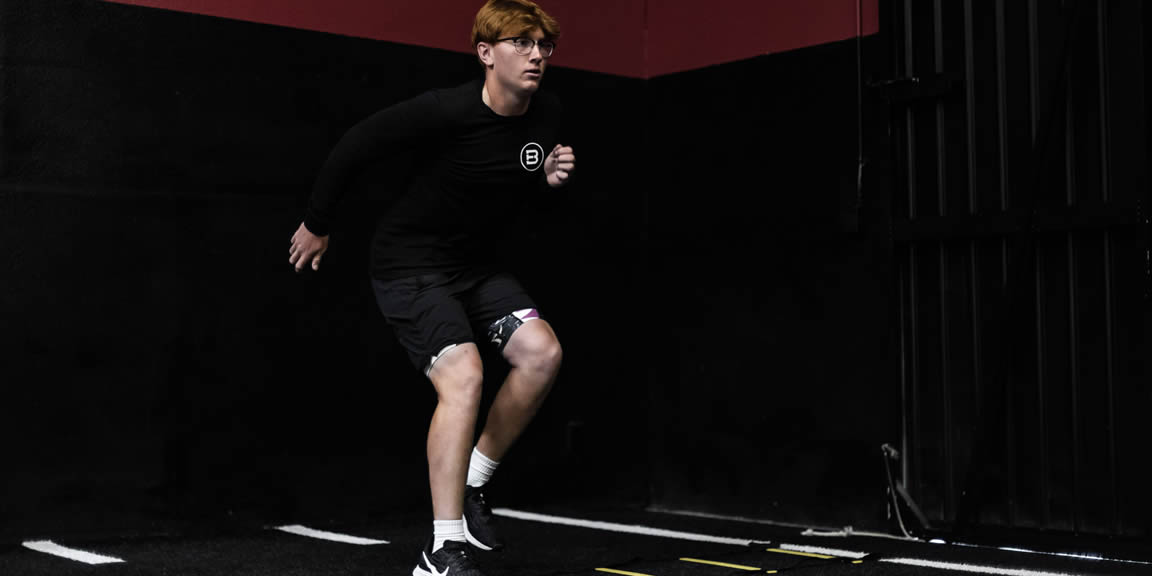
Agility Training
The ability to adapt and redirect speed appropriately to the needs of the game is what can be described as agility, and is essential for athletic success. Athletes who possess high levels of agility are able to change direction or body orientation without significant loss of speed. This ability is based on the processing of internal and external information quickly and accurately.
The goal of agility training is to improve overall body control and awareness. There is a direct correlation between increased agility and development of athletic timing, rhythm, and movement, all key coordinative components of athleticism. Key components of a well organized agility program include the following:
- Body control & awareness
- Recognition & reaction
- Starting & first step
- Acceleration
- Footwork
- Change of direction
- Stopping
Effective movement for agility is a culmination of these skills. When planning agility drills for training they can either be planned or reactive based. When drills are planned athletes know ahead of time what is coming, and therefore know exactly how to react. Planned drills are the most basic of agility drills and can be used to teach proper movement patterns to beginners. Reactive drills are executed in an unpredictable environment that closely mimic the athletic contest. These drills require a much higher level of neural processing and neuromuscular coordination. Because of these increased demands, reactive drills should be used for more advanced athletes.
Planned Drills
- Involves cones/markers
- Athletes know ahead of time what actions to take
- Ex. Back Pedal 3yds, sprint 5yds. Shuffle 5yds, sprint 5yds. Sprint 5yds 135 degree cut left 5yds.
Reactive Drills
- Athletes are required to react to sound, an opponent, coaches movement or other stimuli.
- Athletes are unable to plan or predict when & what stimuli will be presented, and therefore must react when they see it.
- Ex. Shuffle wave drill on coaches cue. Sprint 5yds to 135 degree cut on coaches cue. Lateral start to sprint of coaches movement.
Choosing appropriate drills for agility is to a lesser degree based on the sport and more importantly the level of the athlete. Like all athletic development programs proper progression should be taken into consideration when planning for agility training. Athletes should begin with planned drills that emphasize acceleration and deceleration, and change of direction. These drills should be introduced in their most basic form, and as athletes begin to improve more dynamic exercises focusing on the speed of movement can be introduced. As athletes begin to become more proficient, reactive drills should then be implemented.
According to the National Academy of Sports Medicine, agility training progression is as follows.
- Beginner: Proper movement skill
- Intermediate: Speed of movement
- Advanced: Reaction based speed of movement
At the Boost Performance Center located in Corona ca, we incorporate a variety of agility drills in order to improve overall athleticism with our athletes. We focus less on sport specificity, as we believe in a more well rounded approach to athletic development in which athletes of all backgrounds can benefit from a variety of movement. For more information, check out our Programs or Contact us directly.
All Areas of Focus:
- Program Design
- Strength Training
- Core Training
- Speed Training
- Agility Training
- Movement Training
- Sports Performance
- Nutrition Planning
- Supplements
- VertiMax Training
- Bodyweight Training
- Olympic Weightlifting
- Online Coaching
(951)-532-4904
500 Harrington St. Unit C1
Corona, CA 92880














